Portraits from Ethiopia
Having had the chance to visit Ethiopia in late 2019, I was blessed with many opportunities to photograph the people, particularly children in a rural school and adults in the chaotic “Mercato” in Addis Ababa. Of course, I was also drawn to photographing the Blue Nile waterfalls, Gelada monkeys in the Simien mountains, the castles of Gondar and obelisks of Axum. The most impressive and spell-binding of all however, were Lalibela’s carved stone 13th century churches from Christian roots dating back to the Axumite Empire in the 4th century. Featuring photographs of nuns, monks and priests, such as the one below, will be my final piece: By the Hands of Angels.
I met the two girls above when we stopped for a little “coffee ceremony” by the side of the road. Here, a woman outside her small thatched roof home first roasted beans, soon crushed them and then prepared the “elixir” in a small black ceramic pot. (Coffee is named for the Kaffa province of western Ethiopia.)
Roasting coffee beans
monk in lalibela reading a bible in amharic
My husband, David Lippman, had worked in Addis Ababa as a psychiatrist in 1975. Almost the same day we met, he planted the seed in my heart— not just for him but to visit this beautiful, exotic country. Now, almost 45 years later, we took the leap thanks to our inveterate travel guide, John Leupold with whom we went to Bhutan in 2018.
Rope making in the Simien Mountain range, the tallest in Africa
Below, are a few portraits which reveal the noble facial features, penetrating eyes and often welcoming smiles of the people we encountered. A sense of humble pride emanates from their faces and movements. As some point out, this may be based on the fact that their country, in the Horn of Africa, remained uncolonized except briefly by the Italians in the 1930’s. Much vaster (almost twice the size of Texas), and more diverse than I expected, it borders six other nations, from Eritrea in the north to Kenya and Djibouti to the south and east. With over 109 million inhabitants, Ethiopia is also the most populous landlocked country in the world.
Aside from visiting a small Jewish community center near the town of Gondar, we spent ten days with the predominantly Orthodox Christian Amharic and Tigray people in the north. In a country with approximately 80 ethnolinguistic groups, there is, quite amazingly, peaceful co-existence with the Sunni Muslims as well as with the Animists in the Omo Valley. Relations with neighboring countries such as Eritrea and Somalia have at times been another story over the years. While we were there, however, the Prime Minister of Ethiopia, Abiy Ahmed, had just received the Nobel Peace Prize for his work in securing a more long-lasting peace with Eritrea.
Following are scenes from a classroom, a school teacher with her warm face (sadly I had to crop her T shirt with the words: “Believe Me” due to website formats) and of course, youngsters. While this rural school is heartbreakingly poor, many of the children had carefree, joyous, and even hopeful facial expressions. For example, the young man here, was, as we learned, dreaming of going to medical school; and that day a couple from our small group offered to sponsor him.
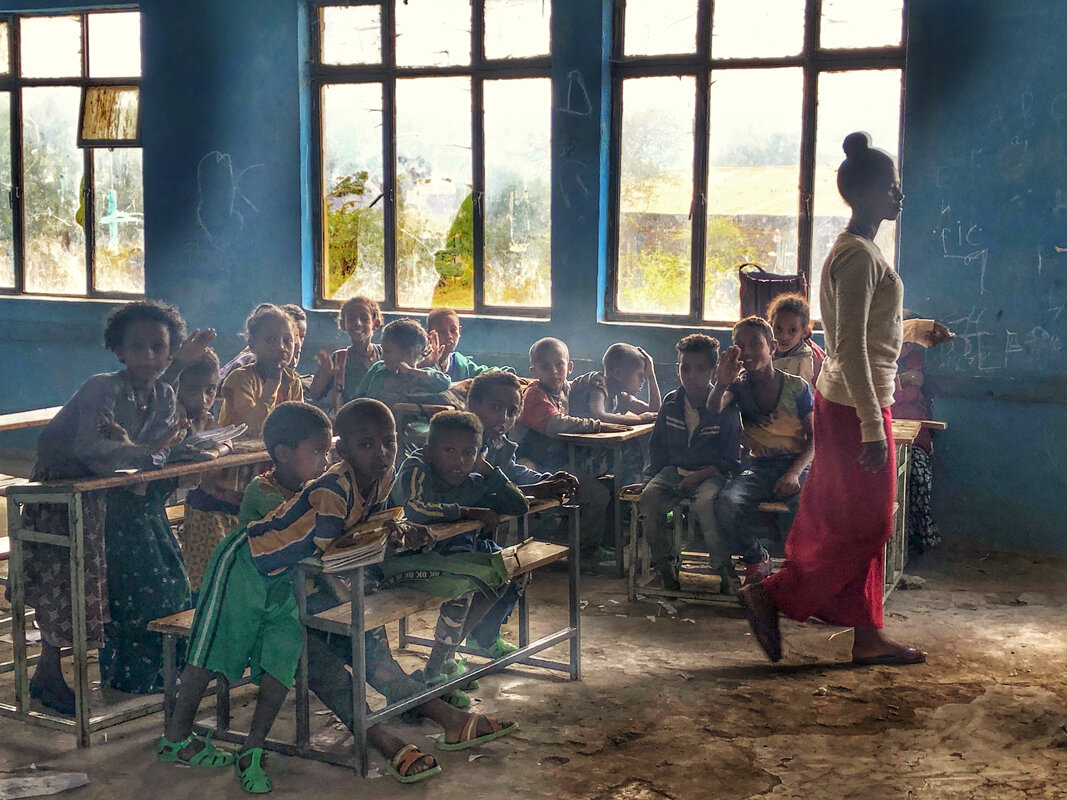
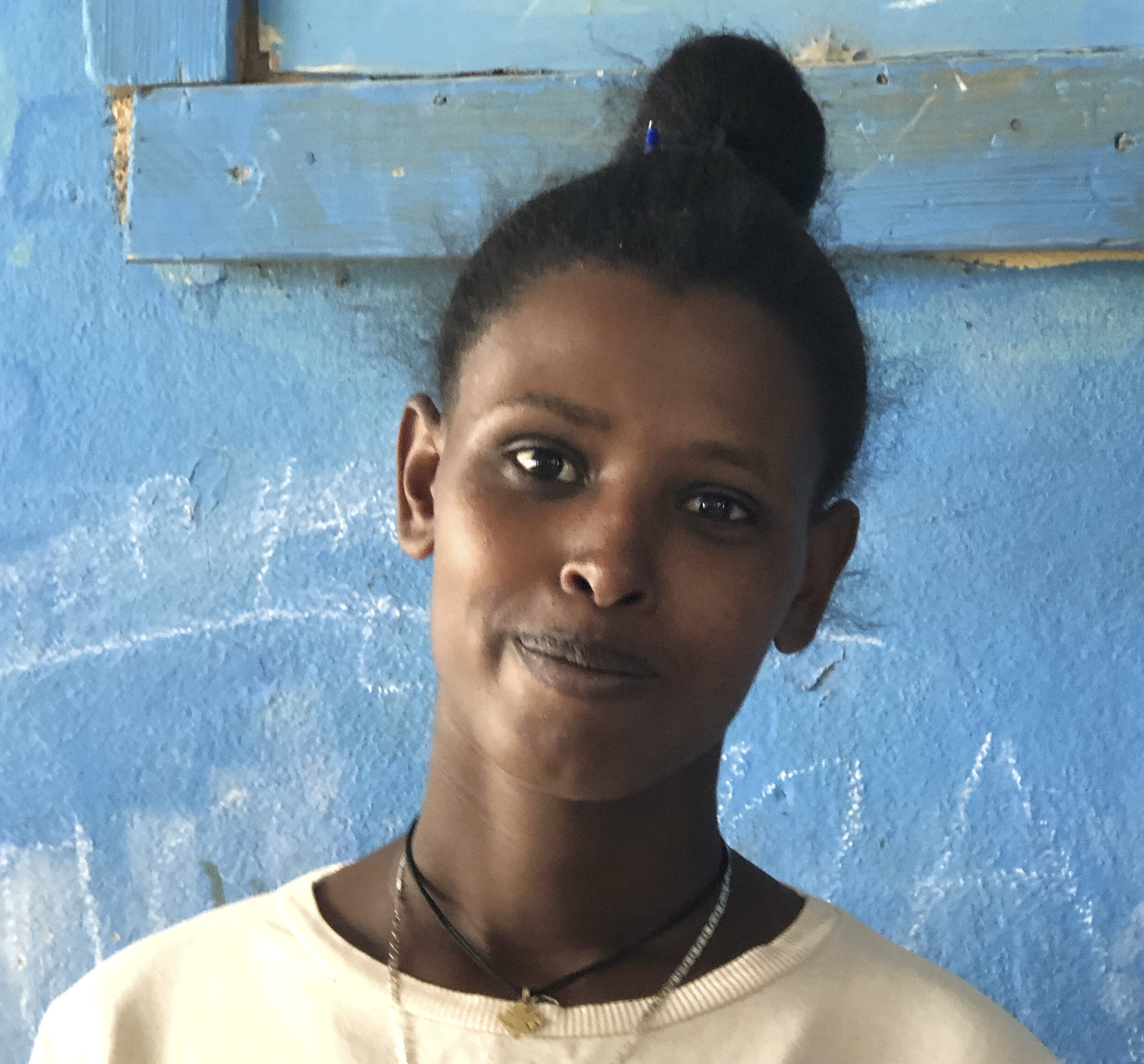
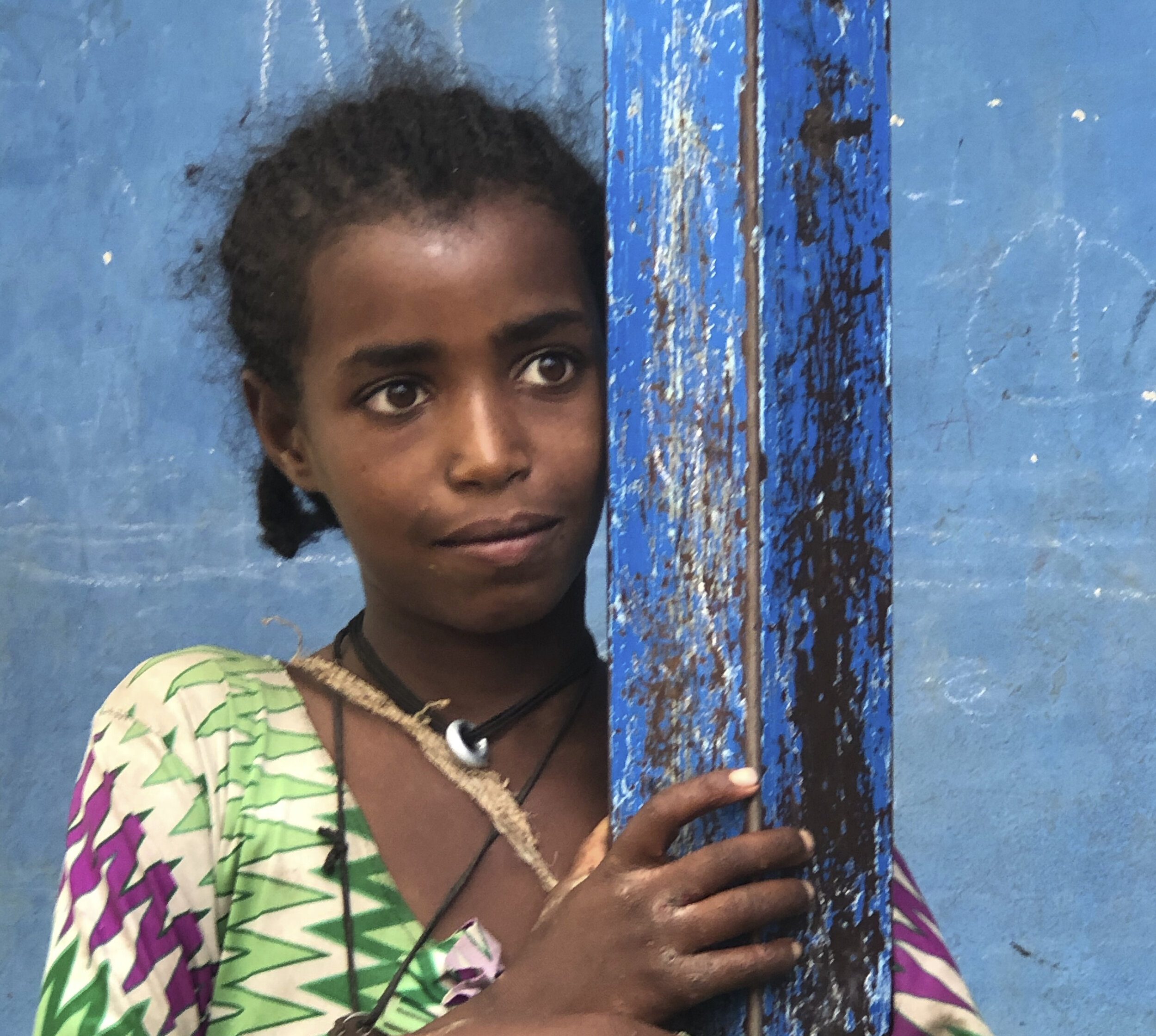
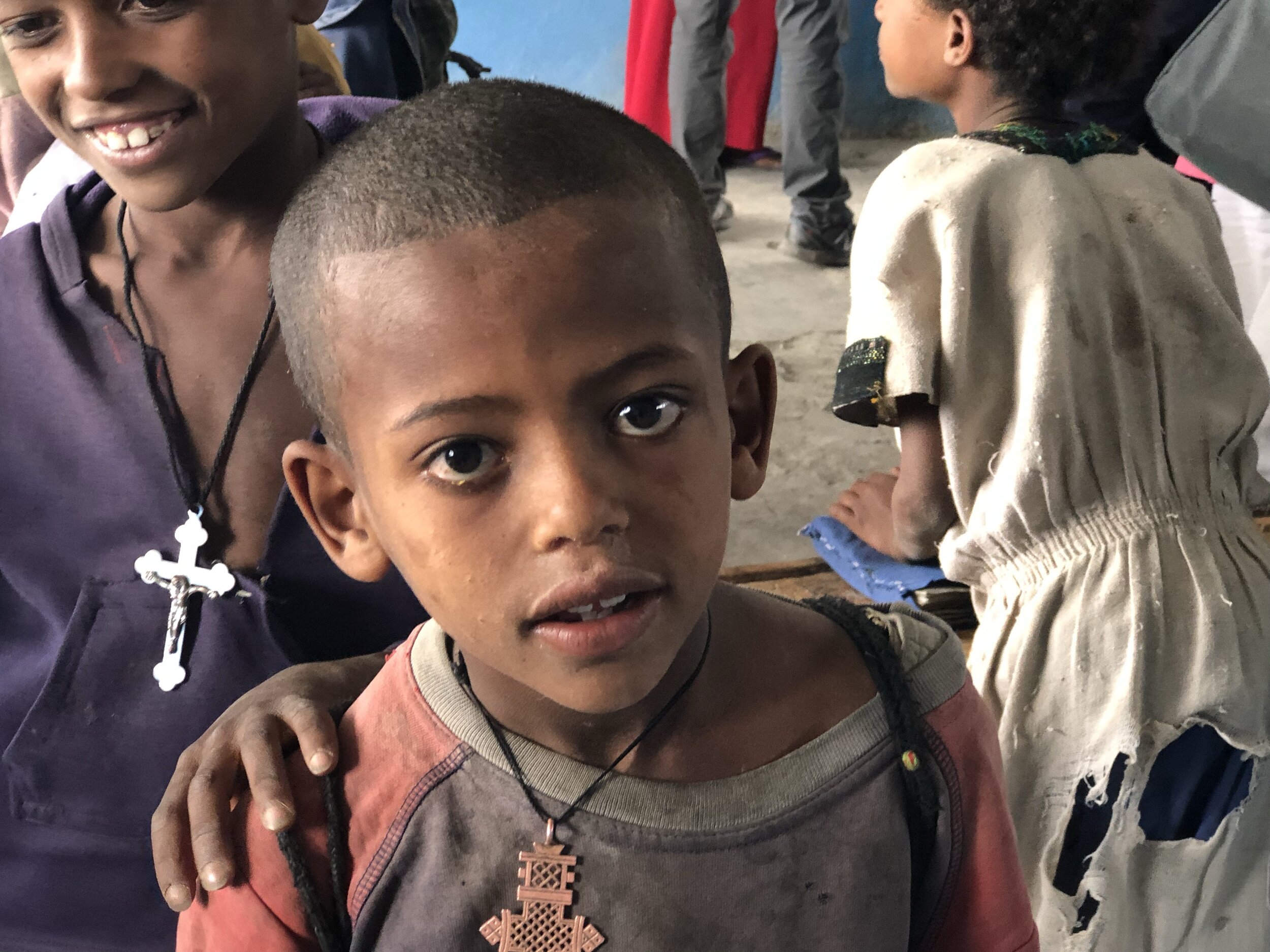
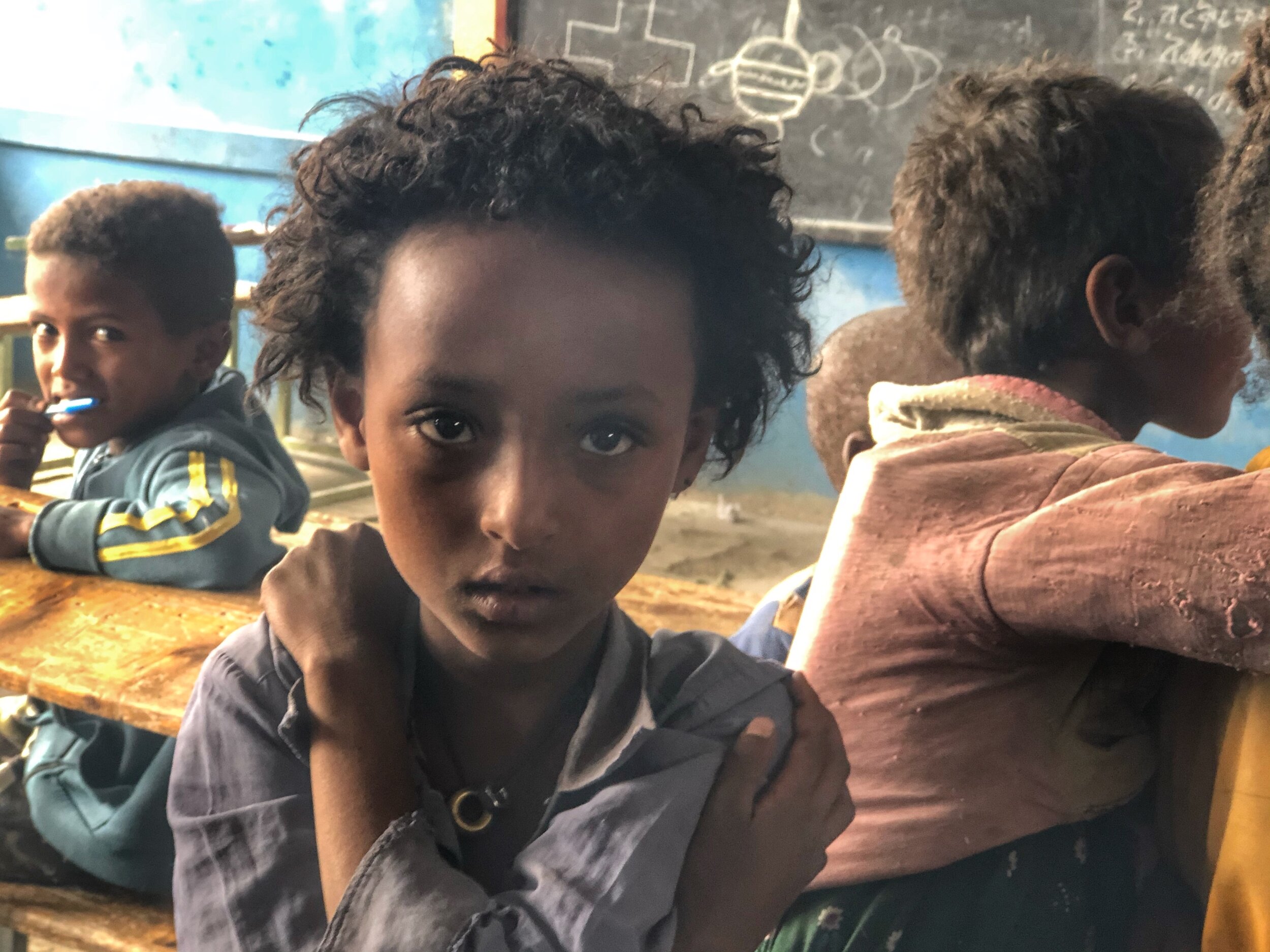
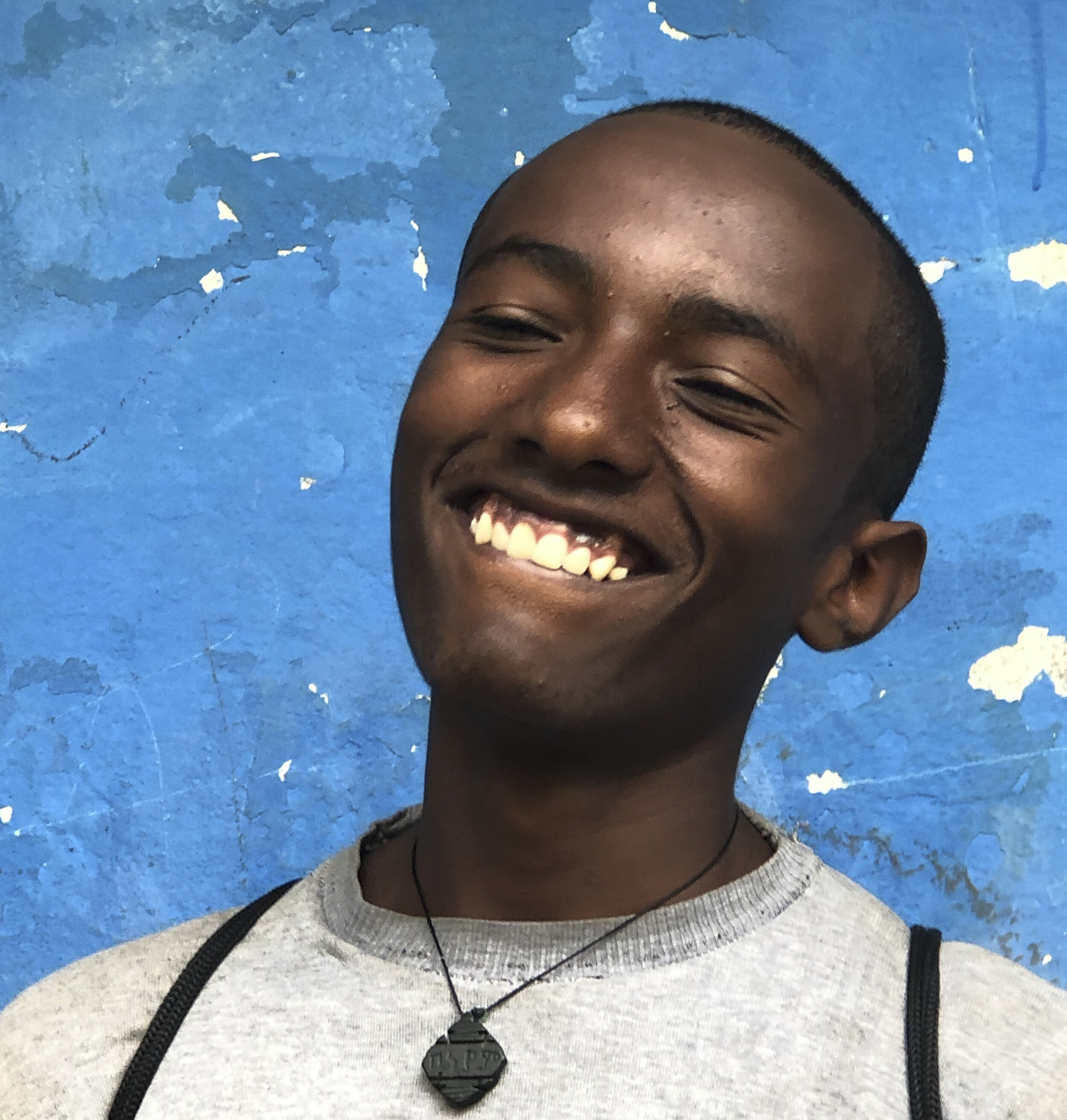
Also striking were the young people I met by the side of the road as we were heading through fields and up a rocky path to a monastery dating back centuries and still in use. A magnificent landscape, it was hard to distinguish it from the Southwest except for the presence of monks, nuns and the priest overseeing the tiny church.
In the photos below is a boy approaching us with his donkey and a girl with quite the hairdo we later encountered. Amidst a group of kids clamoring for a gift by saying: “pen, pen” — possibly the only English words they knew, she caught my eye. After pulling out a pen from my bag, the hard part was choosing whom to give it to. Well, you’ll see who got it.

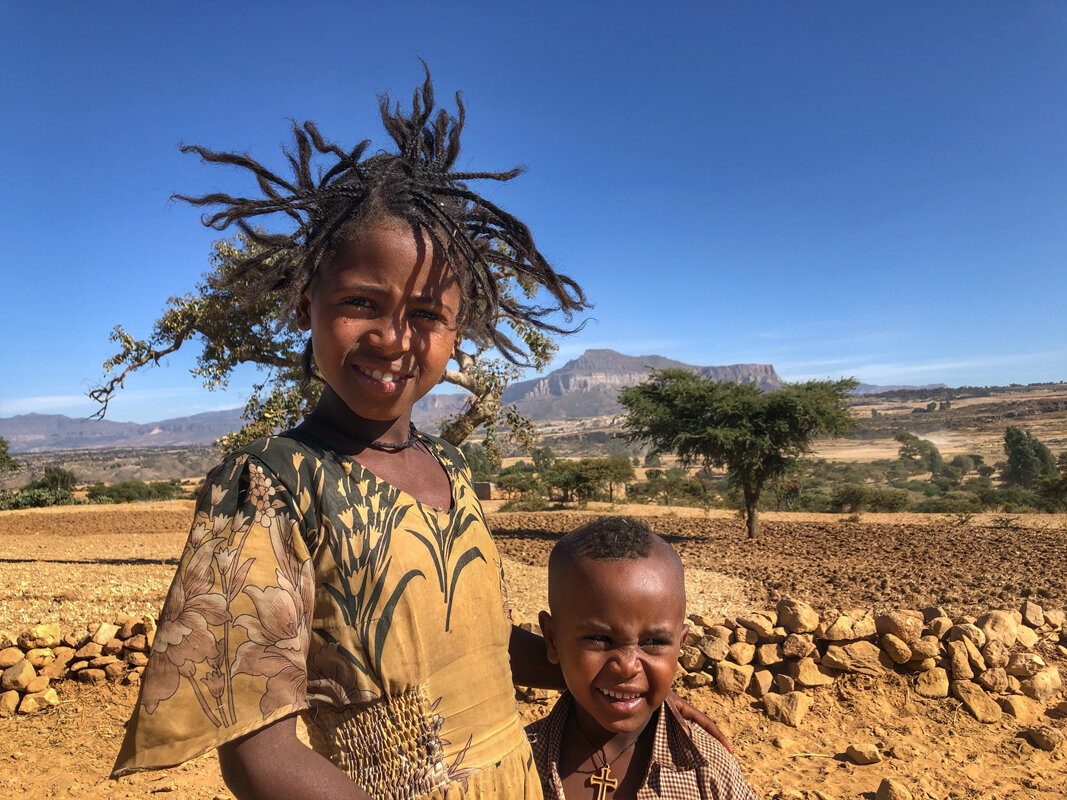
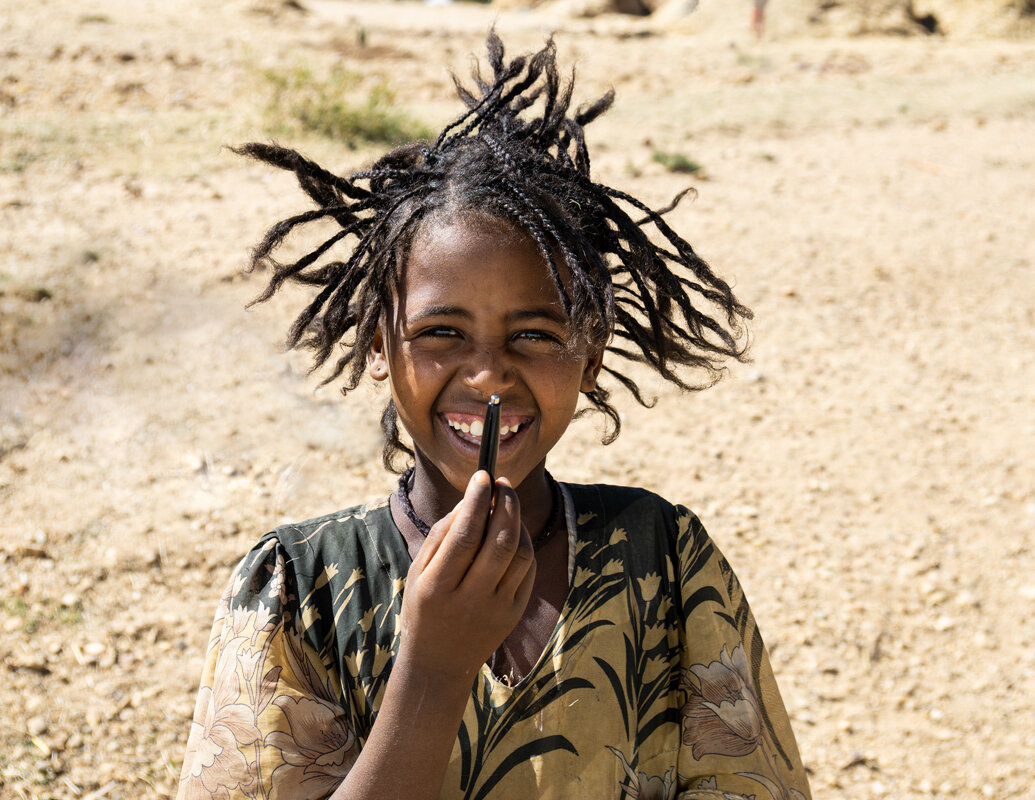

And now for the opposite end of the spectrum: Addis Ababa with a population of over 8 million people and traffic David couldn’t believe. Its bustling, chaotic market, aka the “Mercato”, often has up to 500,000 people, including vendors, buyers, workers, in just one day. It stretches on and on in all directions, perhaps the size of mid-town NYC. (Note the contrast between the tin shacks and a few high rises.)
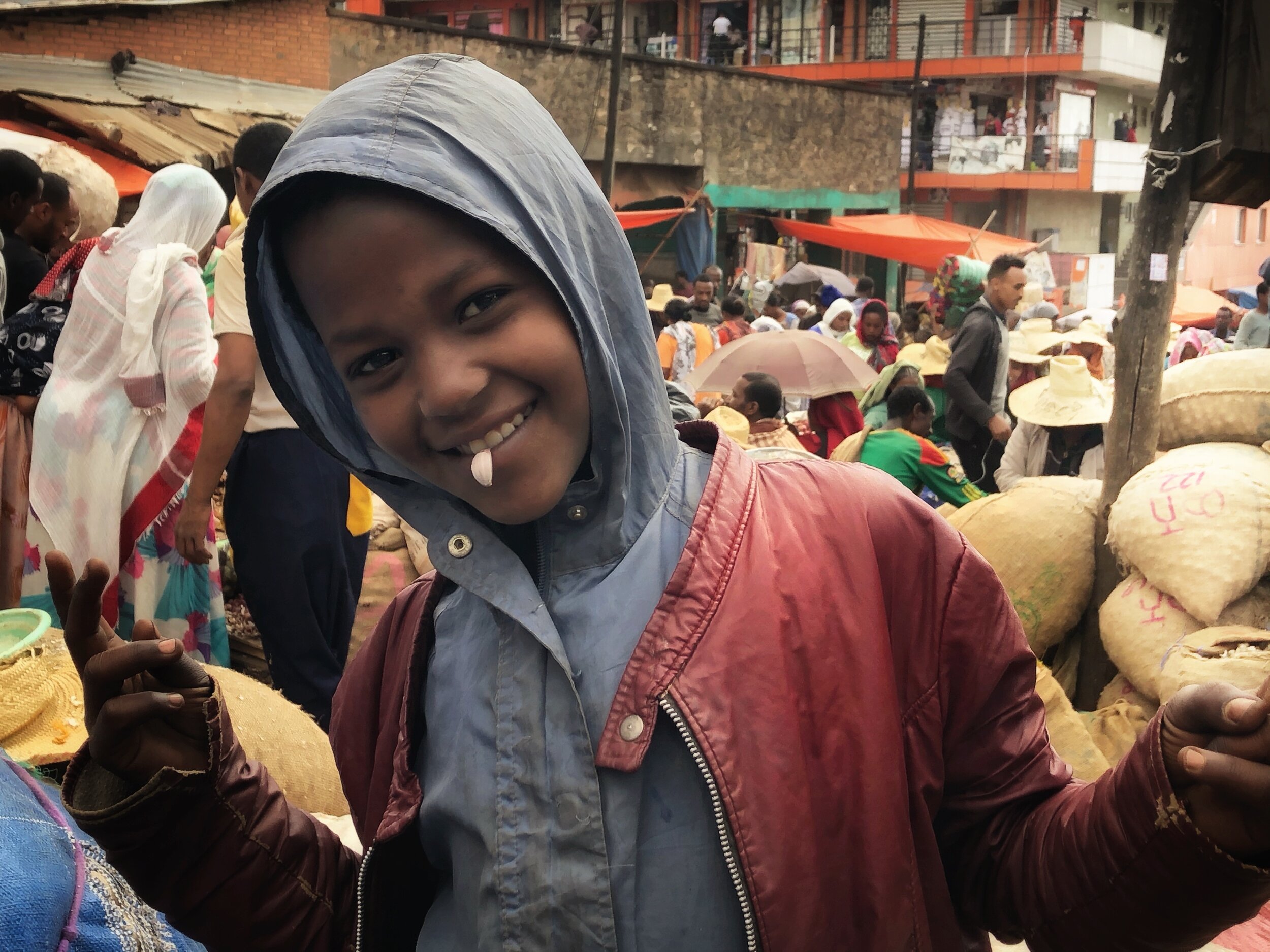
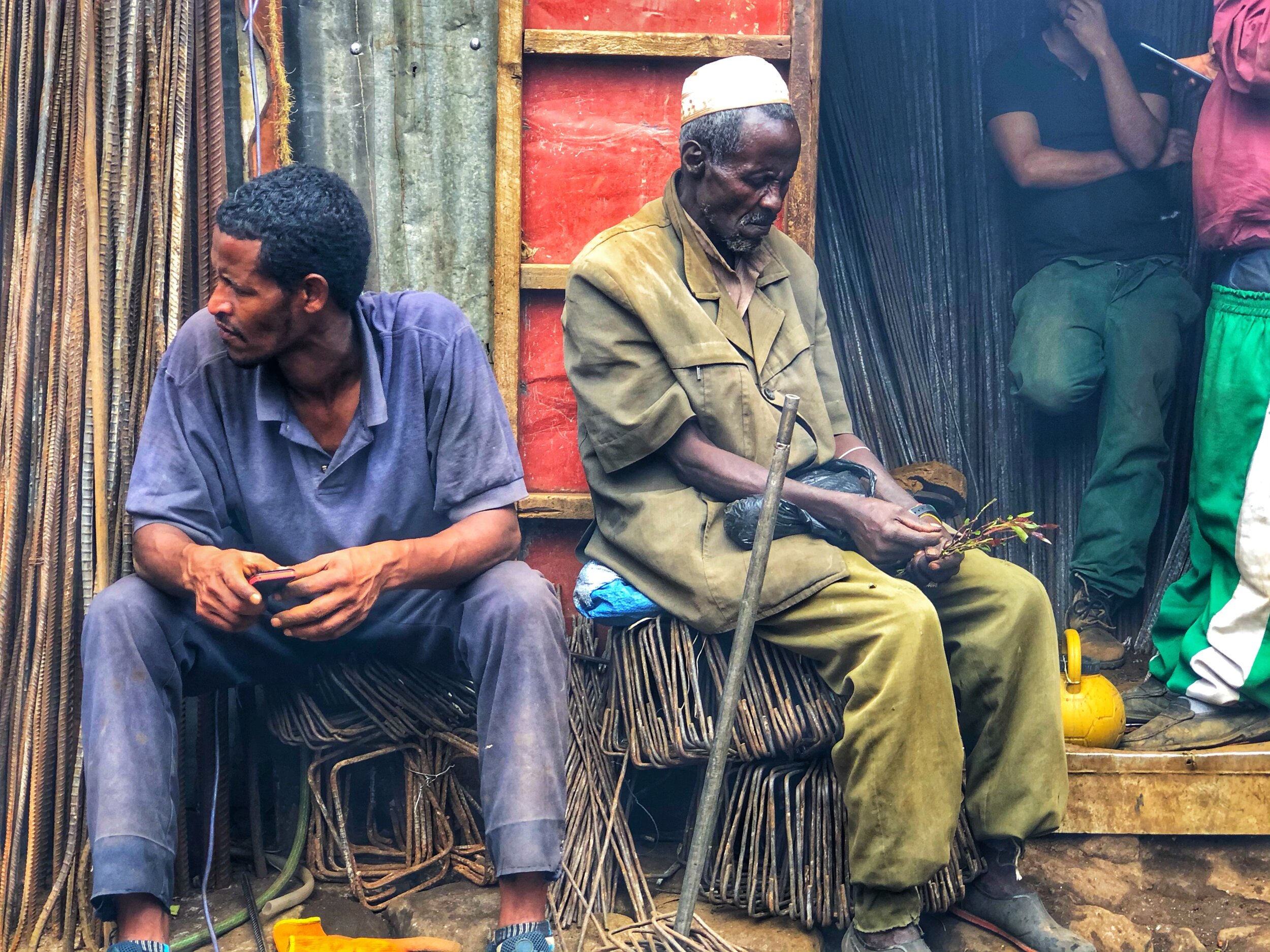
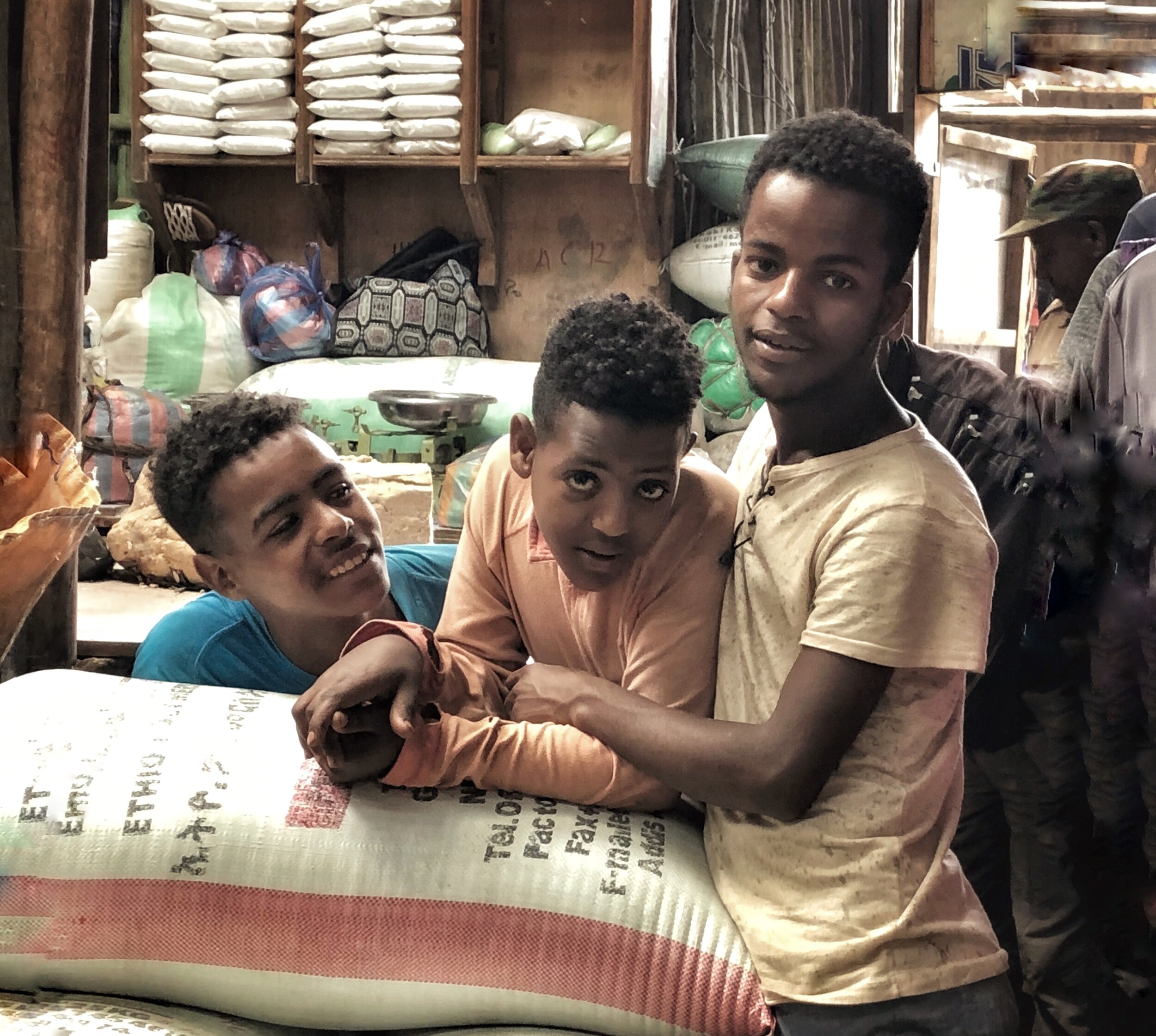
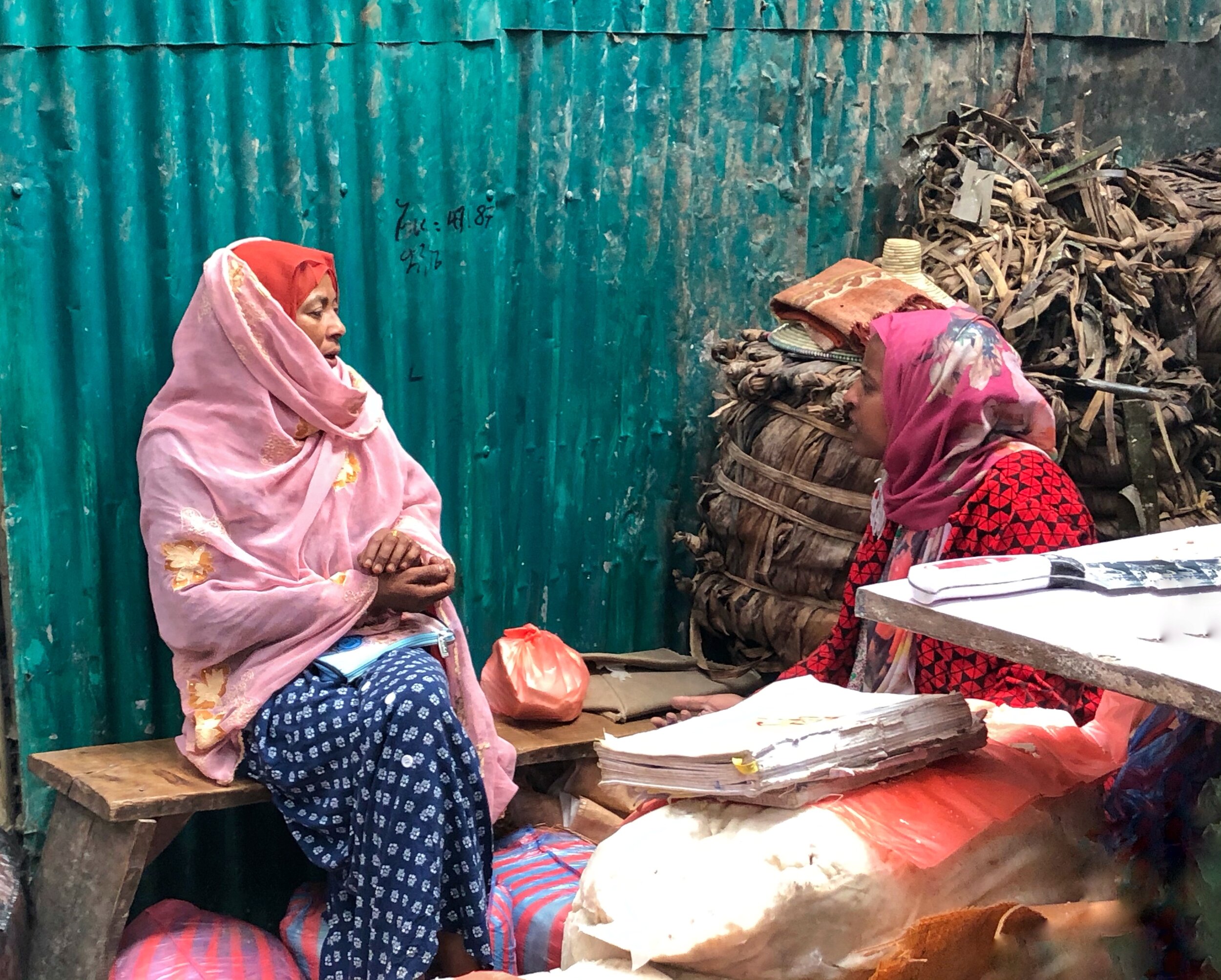
To see a few of Ethiopia’s diverse landscapes, feel free to visit: https://www.honeysharp.com/afar on the Danakil Depression, a salt desert with an unearthly, surreal quality reminiscent of Mars or a distant — or perhaps not so distant dystopia. The other: https://www.honeysharp.com/anethiopianlandscape is on Ethiopia’s Simien mountains with its famous Gelada monkeys followed by the Tigray area which brought memories to me of the Southwest.
To read about Ethiopia’s rich religious life, please go to:







